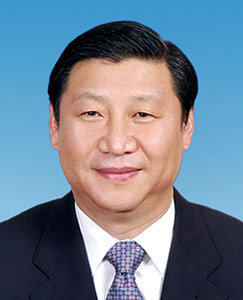
The world awaits with bated breath the results of the US presidential election. But for Australia, this isn’t the most important leadership change this week. Even in America, the changeover of America’s House of Representatives (elected every two years) is arguably more significant.
There, fractious Republicans and Democrats will ultimately decide just how close to the fiscal cliff Washington will sail and it is in Congress, not the White House, where the most important late-night deals on spending and cuts will be hammered-out.
Yet even this is overshadowed by another transition receiving comparatively far less attention. Eleven thousand kilometres away in Beijing on Thursday, the 18th National Congress of the Chinese Communist Party begins. And while the outcome, more or less, is a fait accompli – Xi Jinping, China’s current vice-president, will take the helm with present vice-premier and State Council deputy secretary Li Keqiang the new premier – there are nevertheless big changes that could happen.
The first change may appear cosmetic, but its consequences could be profound. Currently the Politburo Standing Committee – China’s highest decision-making body – comprises nine members, though historically this has tended to range from five to seven, with 11 an outlier. Historically, this committee governs by consensus, ensuring a harmonious face of government to the Chinese public and keeping any disagreements behind closed doors.
Yet with the spectacular ousting of Politburo contender Bo Xilai earlier this year, his wife being accused and tried of murdering a British businessman among other things, cracks have appeared in an otherwise solid façade. Against speculation of a wider power struggle between hard-liners and reformers, technocrats and “Princelings” (children of China’s first Communist leaders), or acolytes of former president Jiang Zemin and current paramount leader Hu Jintao, there’s talk of the Politburo’s composition being reduced again to seven members, reducing the chances of further power contestation.
Like Kremlinologists, who once studied the order of officials photographed at concerts to divine their political power, China analysts must these days use a fair degree of guesswork and nobody really knows on which side of the power struggle any Chinese official sits, but judging from the steady stream of official editorials calling for reform and the very real backdrop of a slowing economy and overstressed finance and property sector, we can presume that Xi and Li are set to shake things up.
Since the economic reforms of Deng Xiaoping in the 1980s, China has made tremendous progress in lifting hundreds of millions of people out of poverty and industrialising its economy to one of the most dynamic – and powerful – on earth. Yet the price of this rapid progress has been a system that, in the words of Wen Jiabao, the outgoing premier, is “unstable, unbalanced, unco-ordinated, and unsustainable.”
That unbalanced and unsustainable system, reliant on fixed-asset investment for much of its growth – with all the attendant graft, misallocation and value destruction this entails – is already showing signs of early distress in the form of unusable inventories, warehoused commodities and unprofitable steel production, the result of which is apparent in a deflating Australian mining boom.
More worrying, however, is evidence of a rise in bad debts, whether taken at the corporate level – third quarter accounts receivable are up some 80 per cent for listed Chinese firms – or at the local government level, where 42 per cent of loans fall due this year and 53 per cent next year, prompting fears of another wave of re-financings in the manner of America’s subprime reset crisis.
Having already worked hard to prick China’s urban property bubble and control the extent to which the shadow banking system was extending dodgy loans or collateralising imported copper stockpiles for speculative projects, the Communist Party appears to understand this dynamic to an extent that Australia’s mainstream economic commentators do not. By appointing a leaner, reform-minded team to its top table, a new leadership group is being assembled to face some pretty tough challenges.
Either way, forecasting strong Chinese growth in the midst of such challenges and change appears naïve at best and foolhardy at worst. Much better, it would seem, for pundits to pore over the Politburo’s seating arrangements, or the colours on standing members’ ties, than to predict that blistering growth can continue after this transition without the need for a wholesale clean-up and reform.
As China’s leaders change so too does the likelihood that its economic model will change too. And while that’s not necessarily a bad thing for Australia – indeed a rebalancing of China’s economy should favour consumers and the middle classes – it won’t necessarily be a good thing for the mining sector or any government that relies on its profits. To use words usually associated with Obama, change is coming and hopefully for the better. The sooner Australia adapts the better as well.
Michael Feller is an investment strategist at Macro Investor, Australia’s independent newsletter on stocks, property, fixed income and superannuation. Macro Investor is running a series of specials on how to prosper beyond the mining boom. Click here for a 21-day free trial. This is an op-ed run in the Fairfax press.